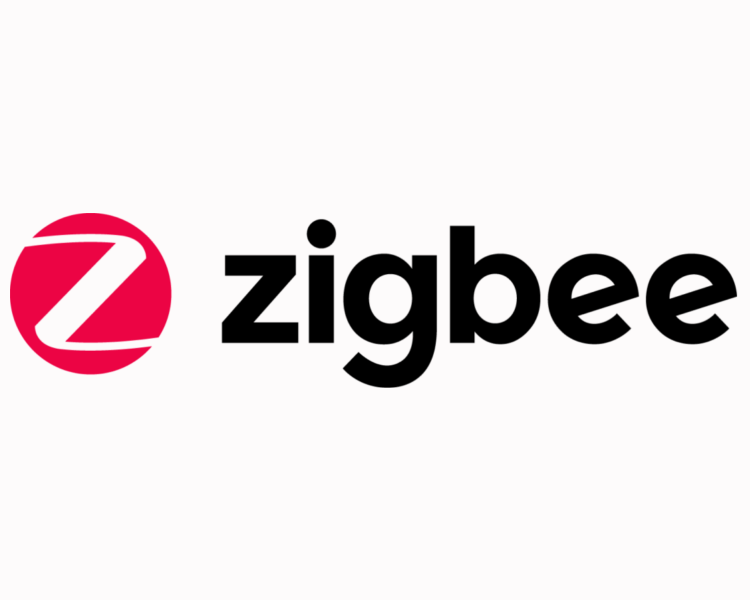家にガジェットを追加するときに、トップスマートホームハブの1つが必要になります。ライト、ロック、ガレージドアオープナー、サーモスタット、カメラなど、さまざまなガジェットをすべて制御できます。 スマートホームハブ。
Smart Home Automationを介して、快適さとまとまりを提供できます。スマートホームハブは、さまざまなメーカーのデバイスを接続するため、オペレーションの中央処理ユニットであるホームオートメーションプラットフォームを介して互いに通信できます。 WiFi、Bluetooth、またはNetworksのようなネットワークを使用できます ZigbeeまたはZ-Wave スマートデバイスを強化します。
Z-Waveは、主にスマートホームネットワークで使用されるワイヤレス通信プロトコルです。これにより、スマートデバイスは、制御の注文とデータを交換するために接続して通信できます。
Z-Waveプロトコルは、WiFiの低電力オプションとBluetoothのより長い範囲の代替品を提供します。また、メッシュネットワーキングとメッセージ承認を通じて、低コストのワイヤレス接続をホームオートメーションにもたらすことにより、電力の困難を軽減するのにも役立ちます。
Z-Wave 101
歴史
Z-Waveプロトコルは、当初、デンマークの会社Zensysによって消費者の光制御システムとして開発されました。現在、独自のシステムオンチップ(SOC)に実装されたホームオートメーションネットワークメッシュプロトコルに発展しています。このスタートアップは、現在のスマートホームプロトコルのより簡単で手頃な代替品を作成しました。 2008年、Sigma Designs Inc.はZensysを購入しました。
100シリーズのチップセットは2001年に導入され、2005年に200シリーズが導入されました。500シリーズのZ-Wave Plusは2013年に導入され、プラグアンドプレイ機能、標準化された、オーバーザエイアップのアップデート、50%を提供します。バッテリー寿命の増加、範囲が67%増加し、帯域幅が250%増加します。
Z-Wave Allianceは2005年に設立され、Intermatic Inc.、Leviton Manufacturing Co.、およびその他の大手メーカーとインテグレーターの代表者が、Z-Waveアプリケーションと能力をさらに広げて拡大しました。 Home Automation Protocols、Inc。、Wayne Dalton、Danfoss、およびUniversal ElectronicsのState State of Home Automation Protocols、Inc.を確認するために、Zensysと会いました。 Honeywell International Inc.、LG Electronics、およびVerizonは、700人以上の現在のメンバーです。

養子縁組と人気
伝えられるところによれば、2002年には6つのZ波認証製品が市場に出ていました。この数は2012年に1,000人に増加しました。2018年の時点で、700人以上のZ-Wave Allianceメンバーによって2,400を超えるZ波認証製品が提供されています。
Z-WaveのWebサイトによると、有名なメーカーのほとんどのスマートホームアイテムが利用可能であり、1億を超えるZ波プロトコルがグローバルに購入されています。
スマートサーモスタット、スマートロックなど、多様なスマートホームおよびIoTデバイスとアプリケーションの範囲 スマート照明、 スマートセンサー、スマートプラグ、アウトレット、スマートホームハブは、リモートコントロールと管理のためにZ-Wave認定デバイスを利用しています。
ADT、GE、Honeywell、Kwiksetを含むブランドがオファーを提供しています Z-Wave認定デバイス。

Z-Waveの仕組み
モノのインターネット(IoT) 一般的にスマートホームハブと呼ばれるアプライアンス、フィクスチャー、およびプライマリコントローラーは、Z波ネットワークを構成します。プライマリコントローラーは、通常、インターネットにリンクされているZ波ネットワークの唯一のデバイスです。 Z-Wave Hubがユーザーの携帯電話、タブレット、またはラップトップのスマートホームアプリからコマンドを取得すると、ハブを含む最大232のデバイスのネットワークを介して宛先デバイスにコマンドを送信します。
Z波信号は他の信号を通過できます Z-Waveデバイス ソースルーティングされたメッシュネットワークテクノロジーを使用して、ユーザーが管理したいデバイスに到達します。 Z-Waveネットワークは、最大4ホップに対応できます。
米国とヨーロッパのZ波プロトコルは、それぞれ低周波908.42 MHzバンドを使用しています。このプロトコルは、コードレス電話のような他のホーム機器との干渉が可能であるにもかかわらず、WiFiとBluetoothが動作する2.4 GHz範囲との干渉を防ぎます。
Z-Waveは、9.6 kbps、40 kbps、または100 kbpsのスループット速度を提供して、小さなデータパケットを転送します。 Z-Waveプロトコルで使用されるGFSK変調とマンチェスターエンコードは、ITU-T G.9959 Worldwide Radio Standardに基づいています。 AES 128暗号化、IPv6、およびマルチチャネル機能がすべて含まれています。

ネットワークIDは各Z-Waveネットワークを認識し、各エンドデバイスはノードIDによって識別され、どちらも識別と承認に使用されます。たとえば、個別のネットワークIDは、1つのZ波装備の家が、同等のセットアップがある別の家のガジェットを制御することを禁止しています。
500シリーズには130フィートの全範囲があり、700シリーズにはデバイス間の通信のために328フィートの範囲があります。典型的な展開のベストプラクティスは、壁やその他の密度の高い建築材料が範囲を減らすため、最大信号強度のために50フィート以下のZ波デバイスを50フィート以下に配置することです。
また、信号を強化することができ、Z波リピーター、他のZ波デバイス間で使用される追加のZ波デバイスを使用するか、バッテリー駆動のバッテリーではなくライン駆動のデバイスを使用することにより、ターゲットに到達するのにも役立ちます。ネットワーク。 4つのジャンプの推定最大範囲は600フィートです。
バッテリー寿命に関して、他の多くのバッテリー駆動のデバイスは1年以上生き残りますが、特定の700シリーズのZ-Waveデバイスはコインセルバッテリーで最大10年続きます。 Z-Waveテクノロジー全体はレトロ互換性があります。
Smart Home製品は、Z-Waveブランディングを運ぶためにZ-Wave認証を取得する必要があります。これには、いくつかの前提条件を満たす必要がありますが、他のすべてのZ波認証デバイスとの相互運用性が最重要です。
Z-Wave Vs. Wi-Fi
wifiの利点
私たちは皆、wifiを理解していますが、ホームオートメーションに使用することに利点はありますか?
通常、走らなければならないコードをつまずくことを心配することなく、家のほぼすべての場所を設置することができます。 WiFiネットワークを使用するために自動化に使用すると、ルーターに既に1つまたは複数のデバイスがある場合は、それらのデバイスのルーターポートを解放できます。
Wi-Fiベースのホームオートメーションシステムの信頼性は、ワイヤレスネットワークに依存します。 wifiが頻繁に消えると、自動化が機能しなくなります。

Z波の利点
WiFiまたはZ-Waveは自動化に優れていますか?信じられないほど、Z-Waveは、WiFiよりもセットアップが簡単です。これは、自宅のWiFi信号に干渉するという懸念がないためです。
ほとんどのZ-Waveデバイスがすぐに互いに発見されるという事実のおかげで、ホームシステムにデバイスを追加するのは迅速かつシンプルです。これらの周波数で動作する多種多様なデバイスのおかげで、あなたの需要を満たすために理想的なZ-Waveガジェットを見つけることができます。
互換性は、Z-Waveがwifiよりもwifiが一致できない利点の1つです。 Z-Waveデバイスは後方と前方の両方の互換性があるため、新しいリリースされたものはすべて現在の構成と互換性があり、古いデバイスは新しいシステムで機能します。
>> Zigbee vs Bluetooth vs Wifi、違いは何ですか?
Z-Wave互換性のあるスマートホームハブとそれらの仕組み
ホームオートメーションシステムは、WiFiまたはZ-Waveを介してセットアップできます。両方のネットワークは、スマートアプライアンス、セキュリティシステム、ガレージドアオープナー、照明など、ほぼすべての電気アイテムに接続できます。
あなたの家にはすでにWiFiネットワークが設定されている可能性が高いため、追加のセットアップや投資は必要ありません。 Z-Waveと比較して、WiFiホームオートメーションデバイスは通常、より経済的ですが、WiFi信号に一度にアクセスしようとするデバイスが多すぎると問題が発生する可能性があります。
Z波システムは最初はよりコストがかかりますが、WiFi信号と同じ波長で動作しないため、干渉の問題は排除されます。
これらは、市場で最高のZ波互換性のあるハブの一部です。
- aeotecスマートホームハブ
- hubitatの標高
- Homey Pro
- Thinka Z-Wave
- ヒーティットZ-Gateway
EVVRハブ - すべての取引のジャック
EVVRは、市場で確立されたブランドの間で製品とサービスの驚くべき星座を備えた新興の名前です。 EVVRハブ 家の周りのすべてのスマートアプライアンスを制御するのに役立つ操作の真の脳です。それは応答性があり、安全であり、主流のZ-Wave Smart Home Hubブランドにうんざりしている短所はありません。
当社のウェブサイトにアクセスして、今すぐ注文してください ビジネス照会を提出してください!












